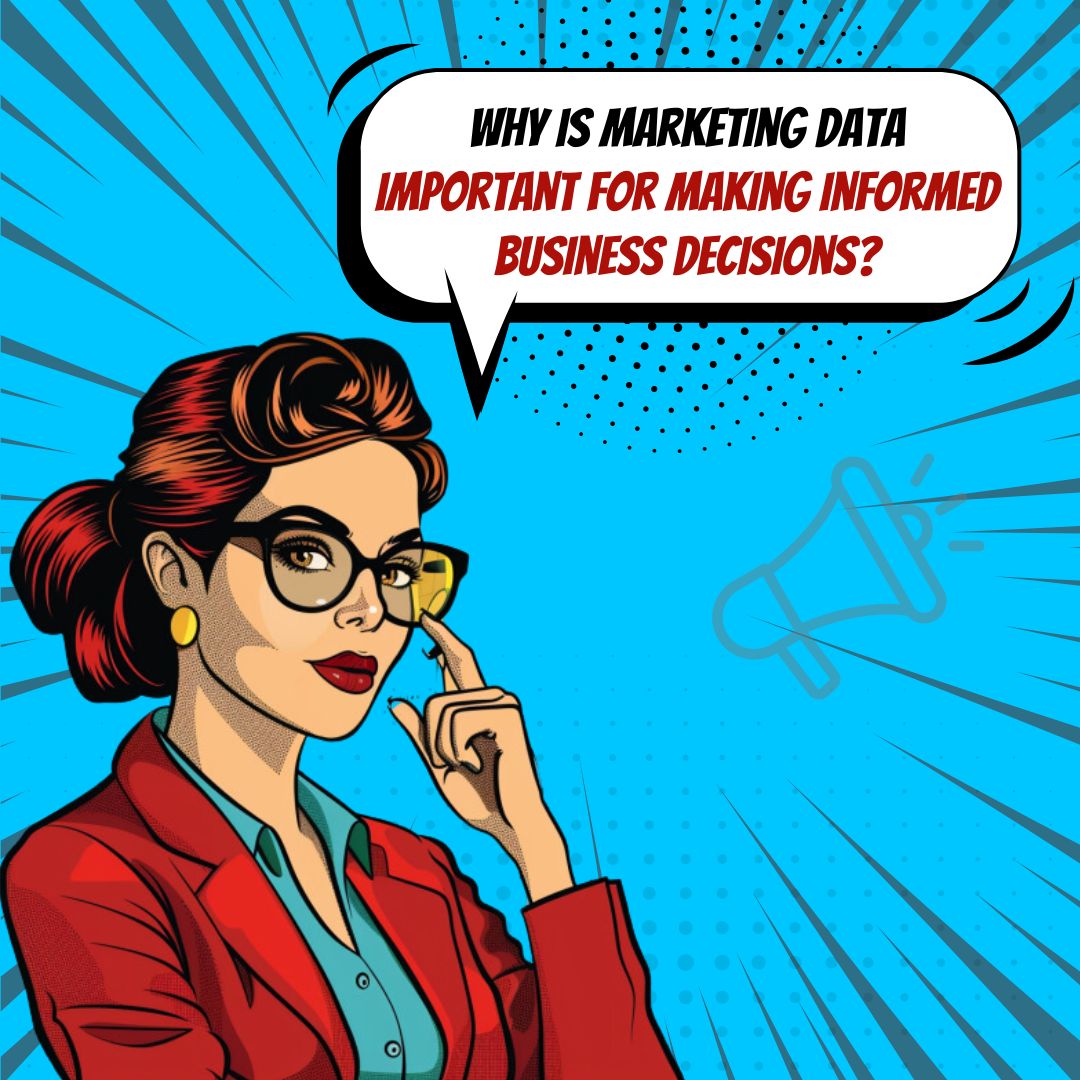Key Takeaways
✅ Definition: At its core, marketing data is the compass that guides businesses through the ever-shifting landscapes of consumer preferences and market dynamics. This data encompasses everything from basic demographics to intricate behavior patterns, illuminating the path to personalization and precision in marketing.
✅ Types of Marketing Data: Whether it's the in-house treasures of first-party data or the wide-reaching realms of third-party info, understanding the multifaceted nature of marketing data is essential. Tapping into these vast pools can propel your campaigns from guesswork to laser-focused targeting.
✅ Strategic Decision-Making: The real magic happens when data stops being numbers and starts shaping futures. Marketing data is the crystal ball that reveals trends, informs strategies, and carves out a niche for your brand, turning noise into music and browsers into loyal customers.
Introduction
Ever wonder why some companies seem to read your mind with their ads? How they know just what you need, when you need it? Well, let's talk about the secret sauce: marketing data. Imagine having a crystal ball that lets you peek into the desires and needs of your customers. Sounds intriguing, right?
In our guide, "Unlocking the Power of Marketing Data – A Comprehensive Guide," we're going to delve into just that. From the ABCs of data types to the XYZs of strategic implementation, we're unpacking the world of numbers and charts to find the stories they're aching to tell.
We've even got a treasure trove of tricks for keeping your data squeaky clean and insights on navigating the twisty road of ethics and privacy. We're giving you the keys to a kingdom where every decision is backed by solid, actionable insights.
So, saddle up, because we're about to whisk you away on a journey that’ll transform how you see your business – and your customers! Are you ready to unlock game-changing strategies that could jack up your ROI to towering new heights? Let's turn the page – your future success story starts now.
Top Statistics
| Statistic | Insight |
|---|---|
| Global Marketing Analytics Market Size: Expected to reach $6.5 billion by 2024. (Source: MarketsandMarkets) | This substantial growth indicates the increasing importance of data analysis in crafting effective marketing strategies. |
| Adoption of Artificial Intelligence (AI) in Marketing: 75% of organizations to operationalize AI by 2025. (Source: Gartner) | Embracing AI can drastically change the marketing landscape, enhancing personalization and customer engagement. |
| Digital Ad Spending Worldwide: To surpass $455 billion in 2021. (Source: eMarketer) | A compelling figure that suggests businesses are valuing digital platforms more than ever to reach their audiences. |
| Increase in Demand for Personalized Content: 91% of consumers favor brands that provide relevant offers. (Source: Accenture) | This underscores a shift towards content personalization to meet consumer expectations and build loyalty. |
| Rise of Voice Search Optimization: 58% of consumers used voice search for local business info last year. (Source: BrightLocal) | Highlights the emerging necessity for marketers to consider voice search in their SEO strategies. |
Harnessing the Power of First-Party Data
Ever stopped to think why your favorite online shop sends you just the perfect suggestions? The answers lie in the gold mine of first-party data they've gathered from you. This is the kind of info you've handed over yourself, maybe when you filled out your profile or checked out with your latest haul. It's the straight-from-the-source stuff like your buying habits and preferences that give businesses the edge to make your experience feel personal. And personal is powerful, right? When businesses use this data smartly, they can create experiences that feel tailor-made, just for you. But here's a question: How comfortable are you with sharing this personal info? And businesses, are you handling it with the care it deserves?
Unlocking Insights Through Second and Third-Party Data
So, moving past the first-name basis we have with first-party data, let's talk about second and third-party data. How are they different? Think of second-party data as a trusted exchange, sort of like borrowing a cup of sugar from your neighbor. You get it from a partner that has direct dealings with their customers, and it fills in the gaps you might have. On the flip side, third-party data is like the broad net you cast to catch as much as possible from various sources. With third-party data, it's a bit of a gamble—you don't know where it's been, but it can enrich your customer insights in unexpected ways. Nevertheless, with cookies crumbling (pun intended), how much longer can we rely on third-party data for marketing strategies?
The Art of Collecting Marketing Data
How do you collect data without sticking out like a sore thumb? You've got your surveys and polls, where you ask people for info outright. But let’s not underestimate the sleuthing powers of web analytics, social media monitoring, and good ol' CRM systems. They're like the whisper network keeping you in the loop without making a scene. The deal is, you're looking to understand what folks want before they know they want it. Ever wondered how tricky it gets to separate the fluff from the good stuff?
The Quest for Quality Data
Our quest for insights can lead us through some pretty murky waters if we're not careful with data quality. Data needs to be clean—imagine trying to find your way out of the woods with a wonky compass! A messed-up data set can mean trouble, leading you to make decisions that might backfire. It's vital to keep things accurate and clean, free from duplicates, outdated info, and errors that make no sense. Have you ever been led astray by bad data before? How did it feel to trust something that turned out to be unreliable?
Making Strategic Moves with Marketing Data
Once you've got that sleek, refined data, it's game time. It's not just about having data, but knowing how to use it. Are you ready to listen to what it's whispering? It's all about predictive modeling and getting a sneak peek at future trends. But aren’t we all wondering whether these predictions are all they’re cracked up to be? Are they really the strategic tools we think they are, or are we just gazing into a fancy-looking crystal ball?
Data Privacy: The Line in the Sand
Here comes the serious talk—data privacy and ethical considerations. It's a minefield, with regulations like GDPR and CCPA laying down the law. These aren't just hoops to jump through—it's about not playing fast and loose with people's trust. How do you ensure you're not crossing the line between using data smartly and intruding on privacy? Being transparent with folks about what you're doing with their data isn't just good manners—it's the law. Isn’t it time we start respecting these boundaries like we do our own?
Learning from Marketing Data: A Cycle of Growth
So, the moral of the story? Utilize marketing data wisely. It’s not just about collecting it; it’s about what it can teach you. By paying attention, you can get to know your customers better and serve them exactly what they need. But remember, with the ever-changing landscape of data privacy and ethics, this isn’t a set-it-and-forget-it kind of deal. It’s an ongoing dance—staying in step with regulation changes, technology advancements, and your own growing understanding of your customers. Are you ready to keep learning and respecting the evolving rules of the data game?
AI Marketing Engineers Recommendation
Recommendation 1: Clean and Streamline Your Marketing Data: Before you can leverage your data to tell you stories about your customers and strategies, you need to ensure it's clean. That means round up all your data—website analytics, email engagement, social media interactions, and sales numbers—and tidy it up. Remove duplicates, fix errors, and integrate your datasets, so they're all speaking the same language. This is your foundation. Clean data means accurate analysis, and that equates to solid decisions you can trust. The trend here is data hygiene—without it, you're building castles on sand.
Recommendation 2: Embrace the Power of Predictive Analytics: By using your marketing data in predictive models, you can anticipate trends, understand customer behaviors, and tailor your marketing efforts proactively. Are your customers leaning towards a new trend you haven't capitalized on yet? By analyzing search trends, online behavior, and purchase history, you can forecast what your customers might be looking for next. Businesses are increasingly turning to predictive analytics for this competitive edge—don't be left behind.
Recommendation 3: Utilize Visualization Tools to Make Sense of Your Data: Turn your marketing data into compelling and comprehensible visuals. This doesn’t just make your data easier to understand at a glance; it can also reveal patterns and insights you might miss in a spreadsheet. Tools like Tableau, Microsoft Power BI, or Google Data Studio can help you create dashboards that tell the story of your data. Why does this matter? Well, when time is money, getting instant clarity on your marketing performance can help you make quick, informed decisions. Plus, visuals are key to communicating your successes and findings to your team or stakeholders effortlessly.
Conclusion
So, we've journeyed through the world of marketing data, and I'm sure you can now see its undeniable power. It's like having a secret map that shows you where the treasure is buried – except the treasure is not gold, it's a deeper understanding of your customers. Whether it's the cozy chatter gathered from first-party data, the inside scoops of second-party data, or the vast landscapes of third-party data, each type opens up new paths for your marketing adventures.
Collecting this data can sometimes feel like you're putting together an intricate puzzle, can’t it? But whether you're sifting through website analytics, picking up insights from social media, or connecting with people directly through surveys and polls, every piece you add helps create a clearer picture of who your customers are and what they want.
However, let's not forget that having a pile of data isn't enough. It's like having a bunch of ingredients but no recipe. The real meal preparation begins when you clean and sort your ingredients – your data – to ensure that when you're ready to cook – ahem, strategize – you're set up for success. Clean and accurate data is the bedrock of savvy decision-making, allowing you to segment audiences, predict trends, and tailor your messages so they resonate just right.
And as we talk about the power of data, we must also chat about its responsibility. With great power comes great responsibility, right? Always remember, behind every data point is a person, with real privacy concerns and rights. Regulations like GDPR and CCPA aren’t there to slow you down, but to ensure that trust and transparency remain at the forefront of your data adventures.
Looking ahead, let's be honest with each other – the data landscape will keep evolving, just like our tech-heavy world does. Staying up-to-date, continuously polishing our data management skills, and always keeping an eagle eye on emerging trends – these are not just recommendations; they are essential actions.
So, what about you? Are you ready to unlock the full potential of marketing data and navigate this ever-changing terrain? Because the journey, my friend, is only just beginning. Keep those gears turning, and never stop uncovering new ways to connect with and understand your audience. After all, that’s what it’s all about, isn't it?
FAQs
Question 1: What exactly is this 'marketing data' I hear about?
Answer: You know, marketing data is basically a bunch of info gathered from different places so businesses can figure out how to better sell stuff. This can include what folks buy, what they like, who they are, how they act online, you get the gist.
Question 2: But why do people make such a big deal about marketing data?
Answer: Oh, it's a pretty big deal because it helps companies not just shoot in the dark. They use this data to get who their customers are, how to set their prices, where and how to tell people about their products, and many more. It's all about creating better stuff for customers and making more sales.
Question 3: Got it. So, what kinds of marketing data are out there?
Answer: There are two main buckets: primary data, which is straight from the horse’s mouth through surveys or chats, and secondary data, which you get from already existing info like reports or stats from other folks.
Question 4: How do companies collect all this marketing data?
Answer: There are loads of ways like asking customers directly, keeping an eye on how people use their website, what they talk about on social media, testing out different things to see what works, and checking into customer feedback or buying data from other companies.
Question 5: What tools can help me make sense of all this marketing data?
Answer: There are some nifty tools out there like Google Analytics or Tableau that sort through this mountain of data and help people see patterns, check out how they're doing, and make smart moves with numbers backing them up.
Question 6: Can they use this data to make things more personal for customers?
Answer: Absolutely, by understanding what customers are into and their past shopping antics, companies can craft messages and offers just for them. This makes folks feel special, and they're more likely to stick around and buy.
Question 7: Sounds handy, but is there anything to watch out for with marketing data?
Answer: Totally. If companies aren't careful with the sensitive stuff, they could end up upsetting customers or even getting into legal hot water. So, privacy and rules like GDPR and CCPA are super important.
Question 8: How can a company make sure their marketing data isn't garbage?
Answer: They've got to keep their data neat and tidy - kicking out any old or wrong info, double-checking facts, and having solid rules for how to handle data. No one likes messy data, right?
Question 9: What's the fancy stuff in marketing data analysis?
Answer: These days, there's some high-tech wizardry like foreseeing the future with predictive models, using machine learning, and even artificial intelligence to guess customer moves and stay one step ahead in the game.
Question 10: Where can I dig up trustworthy marketing data and all those statistics?
Answer: You'll want to look at reports from big research firms, official stats from government agencies, and info from professional groups that live and breathe marketing. They're the gold mines for data insights.
Academic References
- Winston, W. L. (2017). Marketing Analytics: Data-driven techniques with Microsoft Excel (2nd ed.). Pearson Education, Inc. Here's a book that tells us, in no uncertain terms, that rolling the dice and hoping for the best is no way to make marketing decisions. What you need is data - that numerical gold - that'll guide you to make choices backed by solid evidence. Imagine knowing your customer's next move, almost like reading a chess opponent, this book unfolds those very tricks.
- Farris, P., Bendle, N., Pfeifer, P., & Reibstein, D. (2018). Marketing Metrics: The Manager's Guide to Measuring Marketing Performance (3rd ed.). Pearson Education, Inc. Data's all well and good, but how do you make sense of it? This book is like the compass for navigating the sea of numbers and stats in marketing. It talks about metrics, those trusty signposts that let you know if you're winning the marketing game. More than that, it introduces you to the Marketing Dashboard – no, not in your car, but pretty much the next best thing for marketers wanting to keep their finger on the pulse.
- Sharma, K. (Ed.) (2019). Big Data Analytics in E-Commerce: Innovative Applications. IGI Global. Stepping into the colossal realm of e-commerce, this book is your tour guide. It reveals how the giants of online shopping use vast oceans of data to figure out what you want, sometimes before you do. It's about personalization, that feeling of walking into a store where everyone knows your name – or at the very least, your shopping preferences. Those tailored marketing campaigns? This is their backstage.














